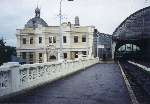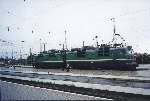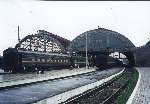|
Introduction |
TRIP TO UKRAINE
|
||
|
Tuesday, September 28, 1999 |
|||
|
Our arrival at the L'viv train station had not provided much of an opportunity for either exploration or photos, and since I am a rail fan, I had to go back. Dad was free, so the next morning I persuaded him to accompany me on my expedition. It was drizzling, but that stopped soon. |
|||
|
I liked this sign for Intertrans, the Ukrainian transport authority. |
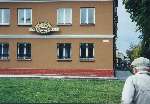
|
||
|
At the station.
I enjoyed exploring the station, which was clean and well-maintained. Unlike the Kyiv station, though, the one in L'viv was quiet both times I saw it. When I told an English rail-fan friend that I had visited L'viv, he sent me this scan of an antique postcard showing the station circa 1910. It looks much the same today, but differs enough that I asked around and another rail-fan in Europe emailed me as follows:
I asked my cousin Roman Senkus, Managing Editor of the Encyclopedia of Ukraine, what "Ploshcha Dvirtseva" means, and he replied
They were actually expanding the station! You can see the area under construction, on the far left of the bottom photo. (Keep in mind that I am from the US, where trains are considered dinosaurs or oddities. We do not expand our train stations, we turn them into shopping malls.) |

|
||
|
Streetcar terminal at the train station. |
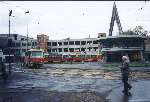
|
||
|
A relatively new church on the way back to the hotel. Church of St. Olha and Elizabeth, completed in 1911, and named in memory of Austrian Empress Elizabeth (L'viv was within the Austro-Hungarian Empire at the time.) |
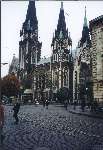
|
||
|
Exterior view of St George's Church and the Metropolitan's Palace. It was mid-morning on a Monday - Note how few cars and people are in view. |
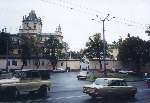
|
||
|
CLOTHING - People dress more formally than in the States. I think this is partly a matter of tradition, a European prejudice against casual dress in public, but may also be a matter of economics - they simply cannot afford casual clothes, or cannot afford to look less than their best. Perhaps it is also a holdover from Communism, and a time when it was dangerous to be different. |
|||
Send feedback to the author: CLICK HERE
Created -- 03/22/2007 Revised -- 03/22/2007

